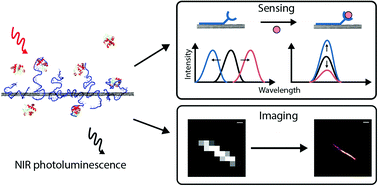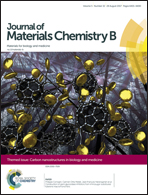Single-walled carbon nanotubes as optical probes for bio-sensing and imaging
Abstract
The unique physical properties of single-walled carbon nanotubes (SWCNTs) have been exploited in novel applications in various fields including electronics and life sciences. Their photoluminescence in the near-infrared (NIR) range, where optical interference from biological tissues is minimum, has rendered them particularly attractive as optical probes in biological environments. Herein we review the use of the SWCNT NIR emission in bio-sensing and imaging. To interface the insoluble carbon nanotubes with an aqueous biological environment, biomaterials and organic polymers have been widely used for non-covalently functionalizing SWCNTs. Such functionalization minimizes the toxicity of carbon nanotubes in biological and physiological environments, while maintaining their optical properties. SWCNTs have been demonstrated as both in vitro and in vivo optical sensors, targeting biologically important molecules, such as neurotransmitters and cell signaling molecules. For optical imaging, functionalized SWCNTs were used as NIR contrast agents for probing cellular processes and imaging plants and small animals. We also discuss emerging SWCNT-based super-resolution schemes. We conclude that SWCNTs are promising optical materials for basic life science research, biomedical diagnostics, and therapeutics.

- This article is part of the themed collections: Recent Review Articles and Carbon Nanostructures in Biology and Medicine


 Please wait while we load your content...
Please wait while we load your content...